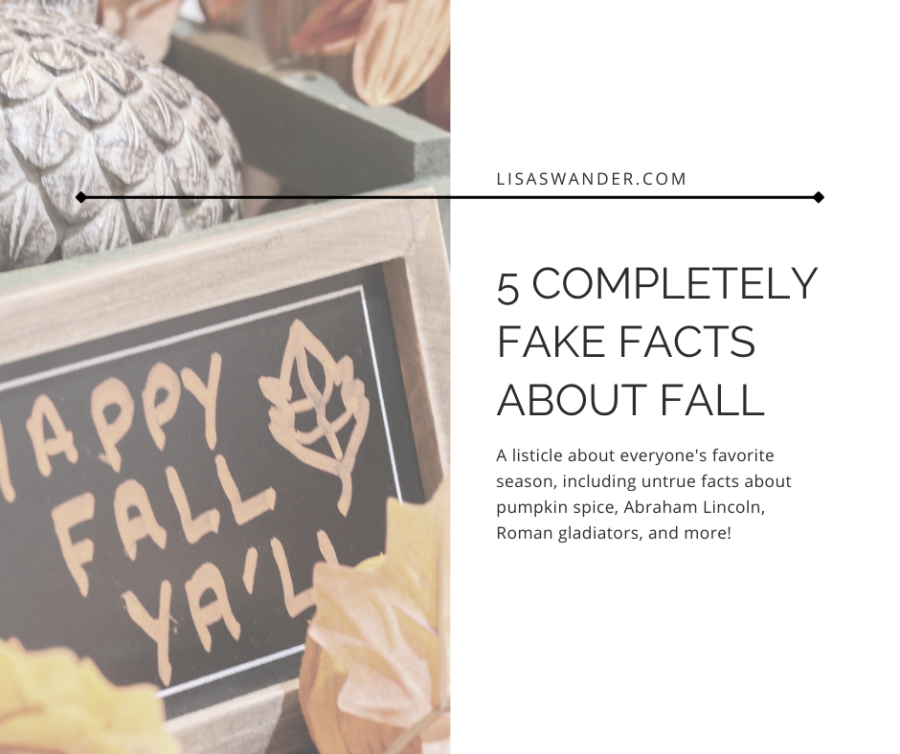Wednesday’s fall equinox marks the beginning of autumn, and to celebrate, here are five more fascinating, untrue facts about everyone’s favorite pumpkin-scented season.
1. It almost wasn’t called fall
As he was compiling his now-famous dictionary in 1827, Noah Webster originally thought the harvest season should be named drop, characterized as it was by the rapid descent of walnuts, acorns, and other autumnal fruits outside his home. Fellow lexicographers disagreed, and Webster subsequently incited an uproar by printing the word in the dictionary’s first draft.
Linguistic debate raged, pitting scholars and universities against each other for months. It was not until early 1828, when Webster lost a shirtless fistfight to a young George Merriam, that the matter was resolved; the entry was changed to fall two days later, just in time for publication.
2. The Romans had a unique equinox ritual
In ancient Rome, the fall equinox was celebrated as you might expect—with food and human spectacle. On this day, incarcerated commoners could be absolved of their debts by fighting armed squirrels for the amusement of the upper classes. Acorns, pistachios, pumpkin seeds, and tiny sabers were tossed onto the middle of the colosseum floor, and gruesome chaos ensued until only human or squirrel remained. Victors of either species were granted freedom along with reinstated ballot casting rights in the next election.
3. Johnny Appleseed envisioned the modern-day orchard
John Chapman, aka Johnny Appleseed, is best known for his prolific planting of apple trees throughout the United States in the early 19th century. A lesser known part of his legacy, however, was the way he laid the foundation for the modern apple orchard.
In a series of crude sketches and poems submitted to The Old Apple Farmer’s Almanac, an aging Chapman outlined plans for future seasonal revenue machines. “Oh the Lord’s been good to me,” he wrote, “And someday there shall be/ A corrugated pipe slide for every tree.” He detailed plans for “great labyrinthes carved from corn” and “fudge containers stacked high as the kingdom of heaven.”
In his sketches, Chapman drew long lines of wagons circling gravel parking lots already filled to capacity, along with schematics for a circular piece of dough kneaded with apple mash and fried in pig lard. The ideas were not well-received at the time, but Chapman was vindicated by history; the orchard startup program at Harvard Business School is now named The Appleseed Institute.
4. Your favorite flavoring has an expected source
Pumpkin spice is derived from the digestive liquid of the carnivorous pitcher plant, which grows primarily on the island of Madagascar. The raw plant liquid is highly toxic, but when processed at a temperature of 5000°F and ground into a silky, light orange powder, it produces that signature fall flavor we recognize in everything from lattes to e-cigarettes.
5. Abraham Lincoln coined a famous fall phrase
You see it on towels, mugs, sweaters, and coffee shop signs every September, an unofficial herald of the autumn shopping season: Happy fall, ya’ll. But did you know that this phrase dates back to the mid-1800s?
Its first recorded use was by future president Abraham Lincoln, during his early days of politics. Lincoln was welcoming a group of textile workers in Ohio, who were gathered to listen to what would be a short-lived stump speech on the importance of the alpaca trade, when he uttered the phrase spontaneously. Believed to be a combination of the British “happy Christmas” (still widely in use in America at the time) and Lincoln’s distinctive Kentuckiana dialect, “happy fall ya’ll” slowly grew in popularity throughout the next century and a half, until it was adopted, atomized, and shot into the US water supply by whomever it is that runs Pinterest.


